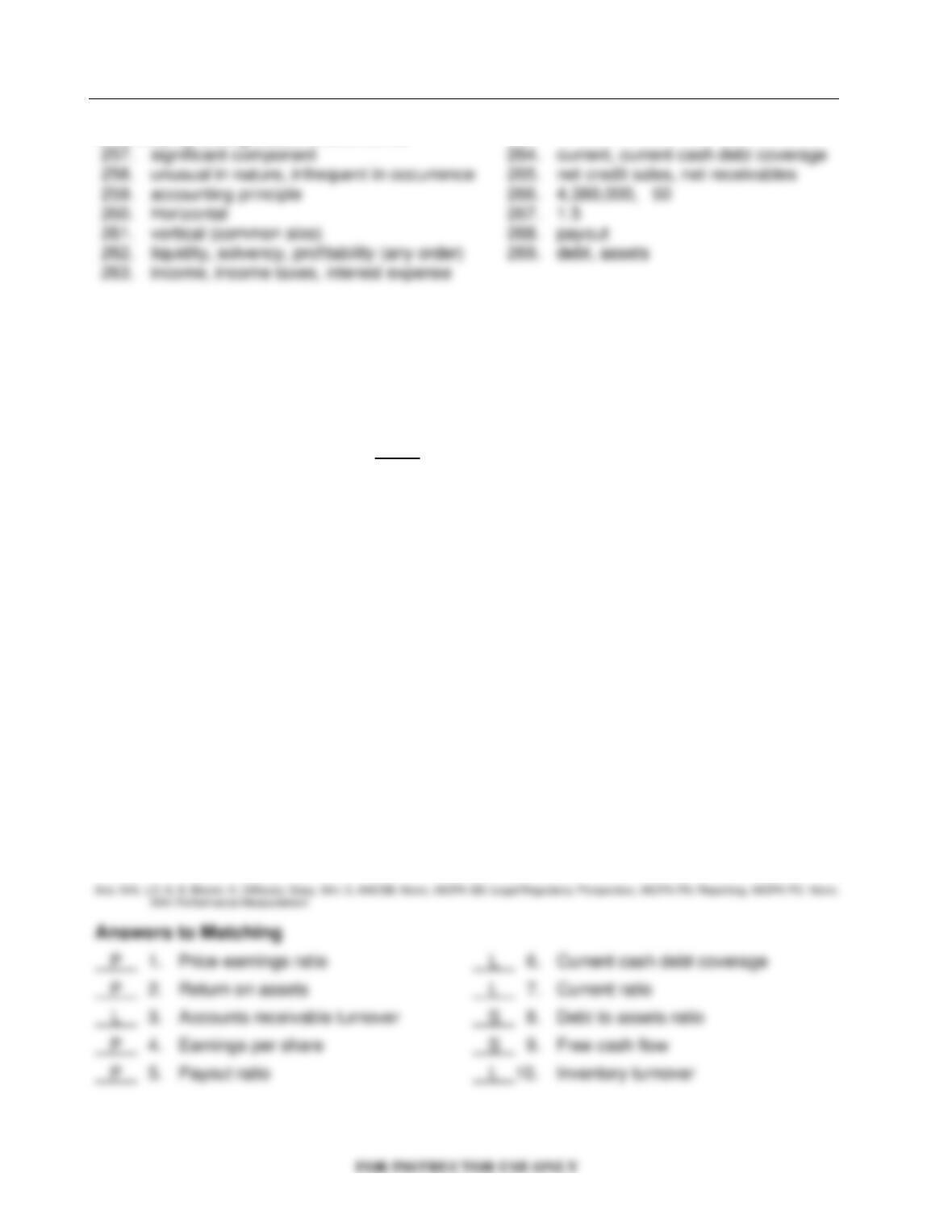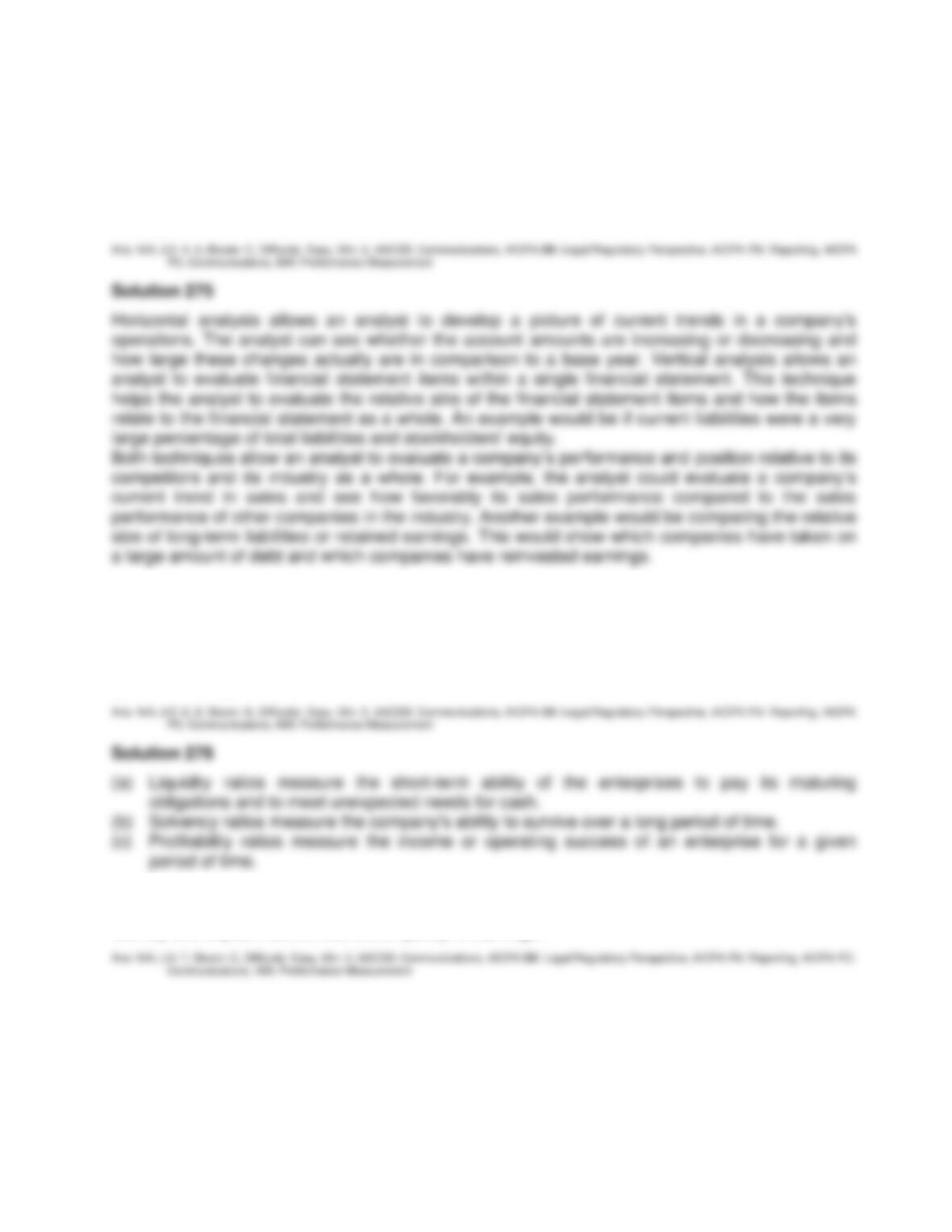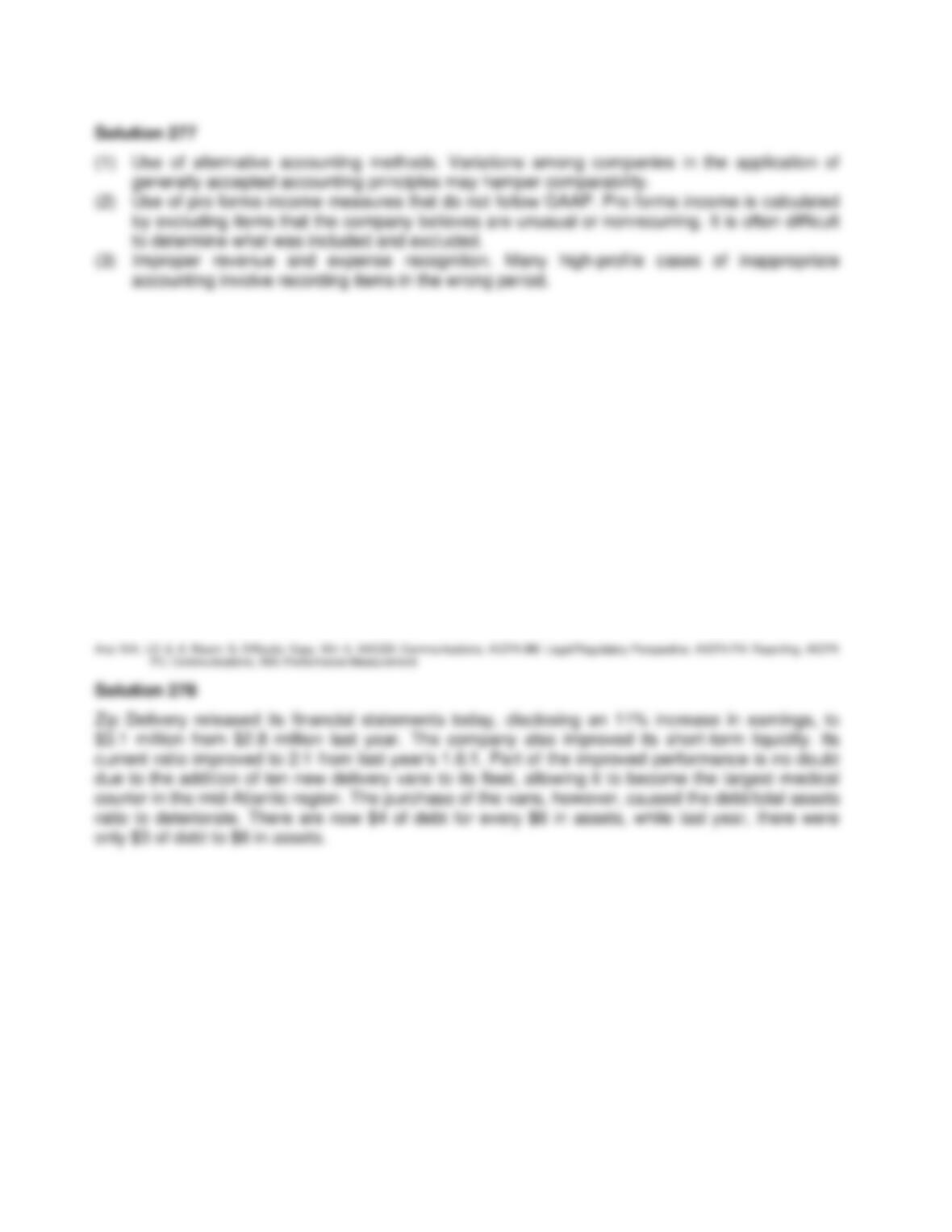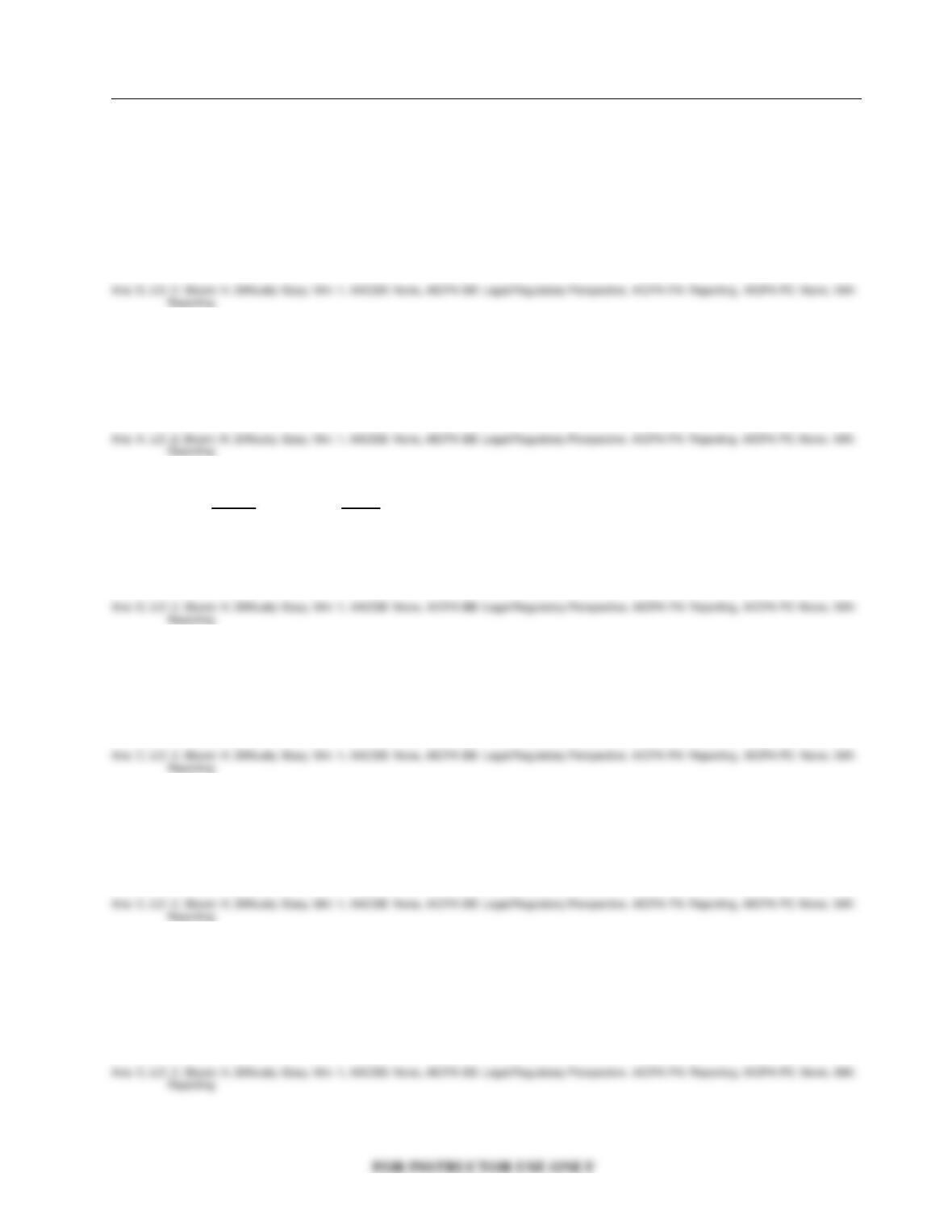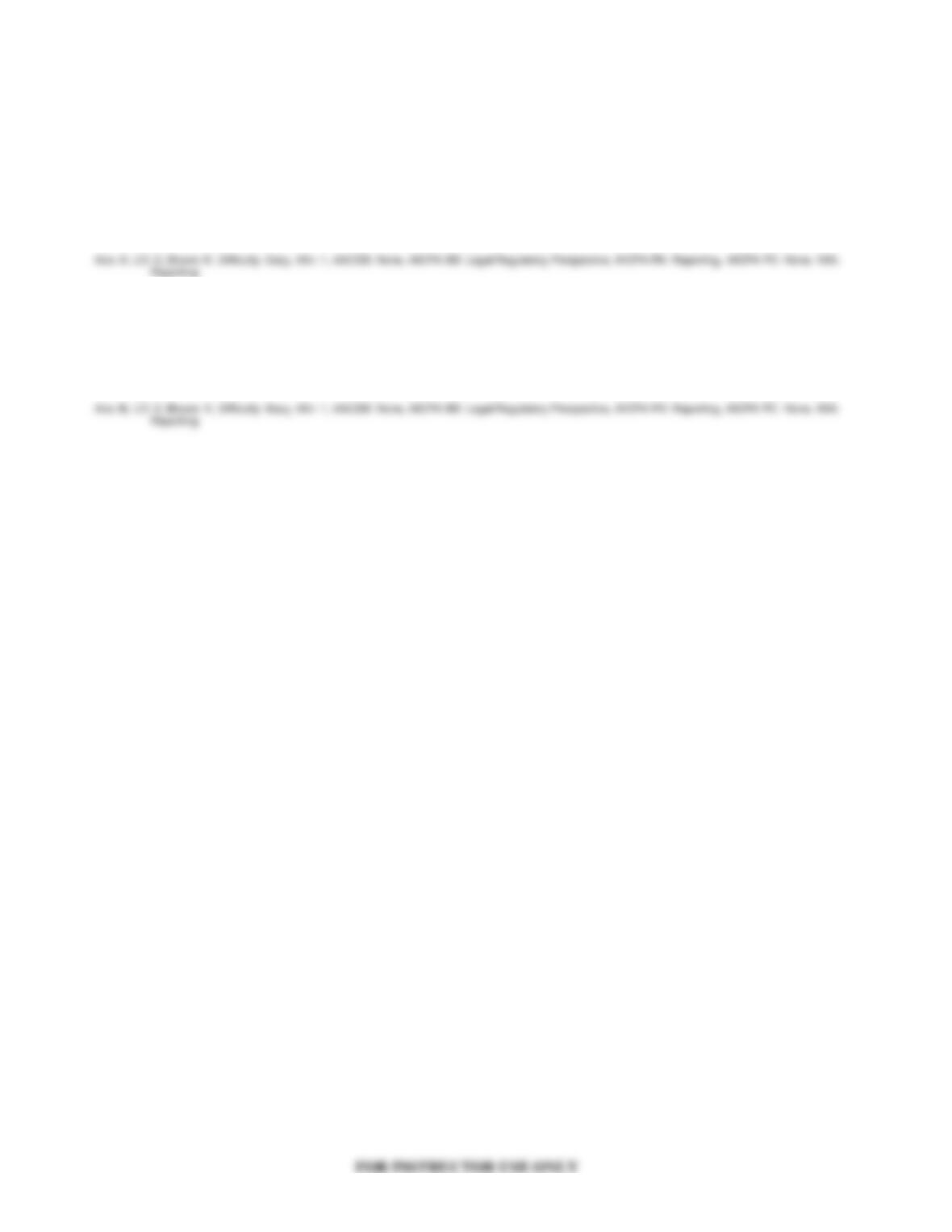198. (Cont.)
What is the current cash debt coverage ratio for this company?
a. 0.67 times
b. 1.5 times
c. 0.27 times
d. 0.44 times
199. The following information is available for Patterson Company:
2014 2013
Accounts receivable $ 360,000 $ 340,000
Inventory 280,000 320,000
Net credit sales 3,000,000 2,600,000
Cost of goods sold 1,500,000 840,000
Net income 300,000 170,000
The accounts receivable turnover for 2014 is
a. 8.3 times.
b. 4.3 times.
c. 8.6 times.
d. 7.6 times.
200. The following information is available for Patterson Company:
2014 2013
Accounts receivable $ 360,000 $ 340,000
Inventory 280,000 320,000
Net credit sales 3,000,000 1,400,000
Cost of goods sold 1,500,000 840,000
Net income 300,000 170,000
The inventory turnover for 2014 is
a. 5.4 times.
b. 5.0 times.
c. 2.5 times.
d. 3.0 times.
201. The following amounts were taken from the financial statements of R.Dodd Company:
2014 2013
Current liabilities $1,280,000 $1,220,000
Long-term liabilities 1,800,000 1,600,000
Interest expense 100,000 50,000
Income tax expense 50,000 30,000
Net income 400,000 170,000
Net cash provided by operating activity 425,000 270,000



















































































